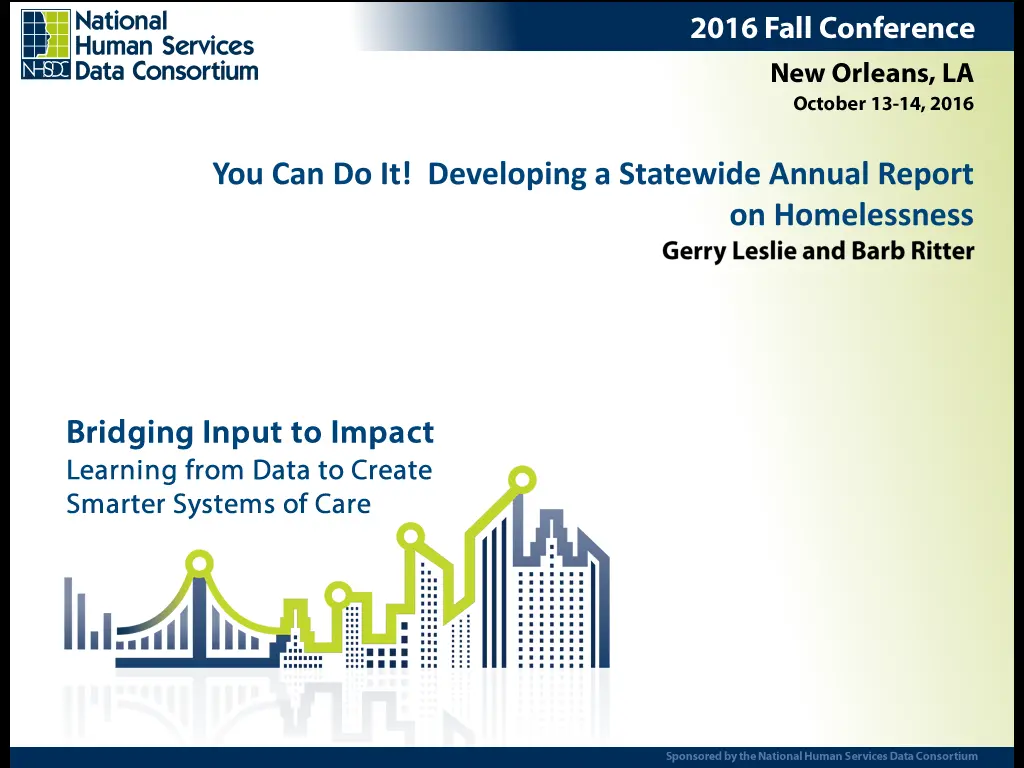
Developing Statewide Annual Homelessness Report
Ground your HMIS data into reality by developing a statewide annual report on homelessness. Learn how to define the audience, schedule, and data quality circle for the report. Utilize the Michigan Annual Report as an example to update count reports efficiently. Understand the importance of relying on HMIS homeless data and projecting coverage to better define the problem scope. Discover how to explain the relationships between time, people, and counts in homelessness scenarios.
Download Presentation

Please find below an Image/Link to download the presentation.
The content on the website is provided AS IS for your information and personal use only. It may not be sold, licensed, or shared on other websites without obtaining consent from the author. If you encounter any issues during the download, it is possible that the publisher has removed the file from their server.
You are allowed to download the files provided on this website for personal or commercial use, subject to the condition that they are used lawfully. All files are the property of their respective owners.
The content on the website is provided AS IS for your information and personal use only. It may not be sold, licensed, or shared on other websites without obtaining consent from the author.
E N D
Presentation Transcript
You Can Do It! Developing a Statewide Annual Report on Homelessness
An Annual Report grounds the HMIS in reality Data is only as useful as the degree to which it is used The foundation of all reporting is to answer the question how many Supports the management/use of limited resources It is all about advocacy
Count Report Define the audience / purpose: Partners include agencies, CoCs, System administrators and local and state leadership. Defined Schedule: Defined Data Quality Circle: Annual Report Agency Validation CoC Validation
Using the Michigan Annual Report as an Example A. Count Report is updated based as needed (agency / CoC / Standards review) B. Data Quality Review Interval (DQ Review Interval) has elapsed (the interval before data quits changing (March 1) C. March 1: Initial Data run is completed and provided to CoCs D. CoCs review the run and make any suggestions for change E. Report is updated ( D and E may involve an extra cycle of data as needed) F. April 15th: Final run is completed by MCAH and local CoCs. G. Note: For each CoC, MCAH and the CoC will decide whether the MCAH run or the CoC run is most appropriate. The approved run is integrated into the Statewide spreadsheet and the CoCs maintains a copy for local publication.
Rely exclusively on HMIS Homeless data or include other data sets: DV Message, Education Message, SOAR, or PIT Projecting to the Whole: Estimating Coverage, Why do it? Plus Better define the scope of the problem. Help others understand the strengths and limitations of the count Process of establishing coverage builds collaboration Your data is important even if you aren t on the System . Minus Based on a formula and concepts. Understanding requires a little effort. Surprisingly hard to explain.
Explaining the relationships between time, people and the Count, or Hey --- the numbers don t add up? Jane s Life Jan 10: Pregnant 17 year old Jane enters a Detroit youth shelter. Her birthday is February 10th. Feb 5: Jane moves to a shelter that specializes in young families in Lansing and has her baby Mar 10th. Mar 12: Jane s children move to grandma s house in Lansing and Jane moves to a new shelter without children. Where is Jane counted?
Location Adults in Family Unaccompanied Single Adult Overall Unduplicated Count: Youth Detroit 1 1 Lansing 1 1 1 1 Sum: 1 2 1 4 Unduplicated Total: 1 1 1 1
Do you have enough data in the System with enough detail to craft a message adequate coverage or adequate combined coverage if you are rural? Have you got a good quality counting report that has been validated at the agency level. Data Quality Publication Are Partners willing to dedicate time for this? Are you excited??? Remember this is administrative data. It s not perfect!
How long before the data stabilizes? What is the time period for the publication? Calendar Year Grant Year When does it have to be completed roll out plan? Conferences About currency of the Report
One document or several specialized documents? Veterans, Youth, Seniors, Legislative View, Providers Literally Homeless only or broader Category 1 and 2 Do you project to the whole? What is on the Data Table addressing common questions. Beyond the UDEs how about coordinated assessment data (eg. VI- SPDAT, DV data, Educational Definition of Homelessness) Inputs: What did you create locally to help. Trending: How to address database evolution?
Are you going to include Infographics? Cost Time Frame Partnerships Stories from Consumers addressing common questions. How much is too much explanation Outcomes (HUD s, Campaign goals, other local goals) About HUD s publication of HIC/PIT data
Report Design and Publication Phase includes collection of all data points, further analysis, production of message, editing and design elements and printing. Review of the 2015 Michigan Annual Report Discuss Collaborative Report Rollout Strategies
Gerry Leslie gleslie@mihomeless.org 517-853-3896 Barb Ritter britter@mihomeless.org 517-853-3893
